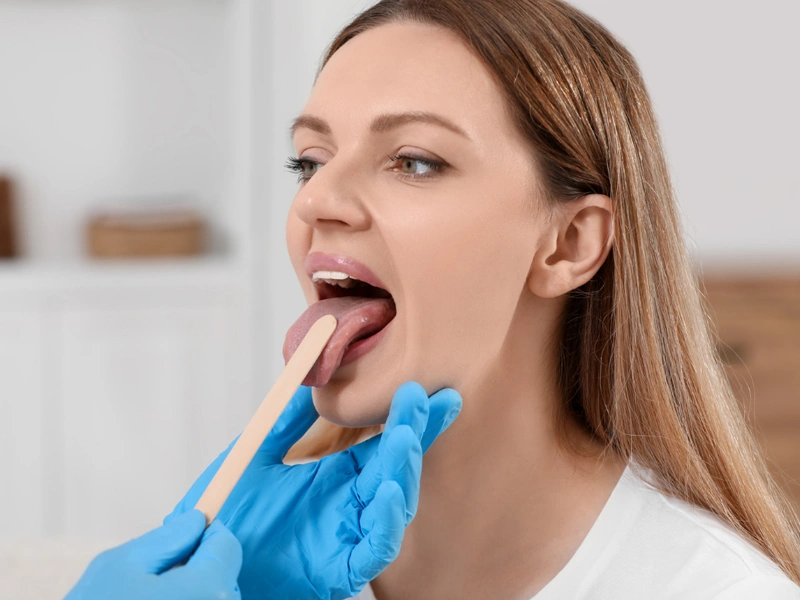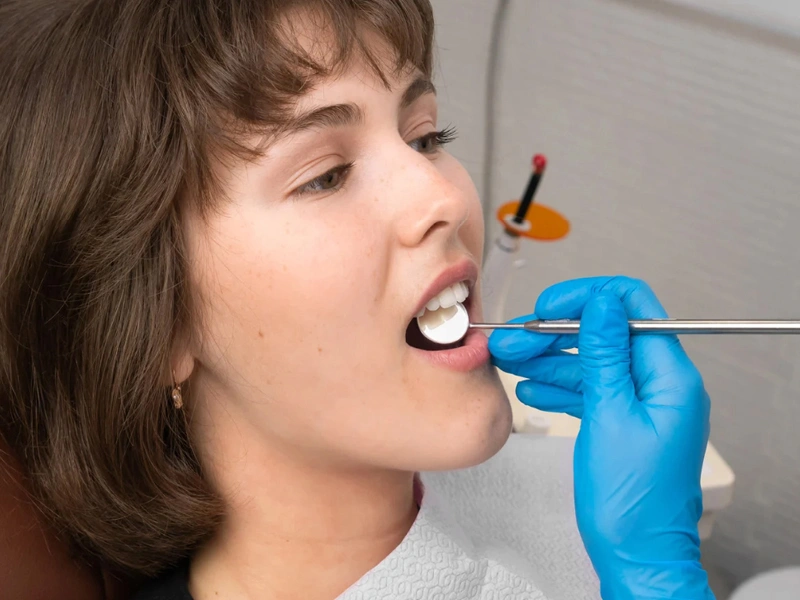REFER A FRIEND: GIVE $50, GET $50
Early Detection of Oral Health Issues

Identifying Early Signs of Oral Tissue Changes

Common Oral Conditions
- Geographic Tongue: Also known as Benign Migratory Glossitis or Erythema Migrans, this condition results in a map-like appearance on the tongue, where areas of the papillae are missing. These red patches can appear and disappear over time and may cause sensitivity to certain substances.
- Median Palatal Cyst: A fluid-filled cyst that typically develops in the middle of the palate. While it is usually harmless, it may cause discomfort and should be monitored.
- Hairy Tongue: This condition is characterized by an overgrowth of bacteria or yeast on the tongue, causing it to appear discolored, often black and hairy. It can be caused by poor oral hygiene, antibiotic use, radiation treatments, or certain health conditions such as HIV. Treatment may or may not be required depending on the severity.
Treatment of Pathological Diseases
In most cases, pathological changes in the oral region may cause discomfort or cosmetic concerns but are not life-threatening. However, oral cancer rates are increasing, particularly among men, and the survival rate is approximately 80% when diagnosed early.
Oral cancer refers to cancers affecting the tongue, jaw, and lower cheek areas. It’s important to note that while dentists cannot definitively diagnose a pathological disease without taking a biopsy sample, seeking immediate attention when changes are first noticed can be crucial for early detection and treatment. For less serious oral health issues, several treatment options may be considered:
Antibiotics
If a bacterial infection or persistent soreness is present, a course of antibiotics may be prescribed to help restore the mucosa to its natural state, alleviating discomfort.
Diluted Hydrogen Peroxide
For issues caused by poor oral hygiene, a diluted hydrogen peroxide mouthwash may be recommended to reduce bacteria and improve symptoms like halitosis (bad breath).
Oral Surgery
In cases involving cysts or non-cancerous growths, the dentist may recommend surgical removal to relieve discomfort, improve breathing, or facilitate easier speech, depending on the location of the growth.

Oral Examination

Oral Cancer Screenings
An oral cancer screening is typically conducted during a comprehensive or routine check-up. The screening is quick, painless, and typically takes only a few minutes. During the procedure, the dentist or hygienist will use a laser light to examine the soft tissue for any cell changes that could be indicative of oral cancer. If any abnormalities are detected, a small biopsy will be taken and sent to a laboratory for analysis. If the results confirm the presence of oral cancer, an excision (removal) is usually recommended.
If you are experiencing any pain or concerning symptoms, we encourage you to contact us today to schedule an appointment.



